
MVRDV designs demountable office building as "source to harvest materials from"
Dutch architecture studio MVRDV has created Matrix One, a laboratory and office building in Amsterdam designed to be dismantled into reusable parts.
The six-storey building has a steel frame structure and prefabricated hollow-core concrete floor slabs, which were assembled without fixed connections so that parts can be detached and reused after the building's life span.
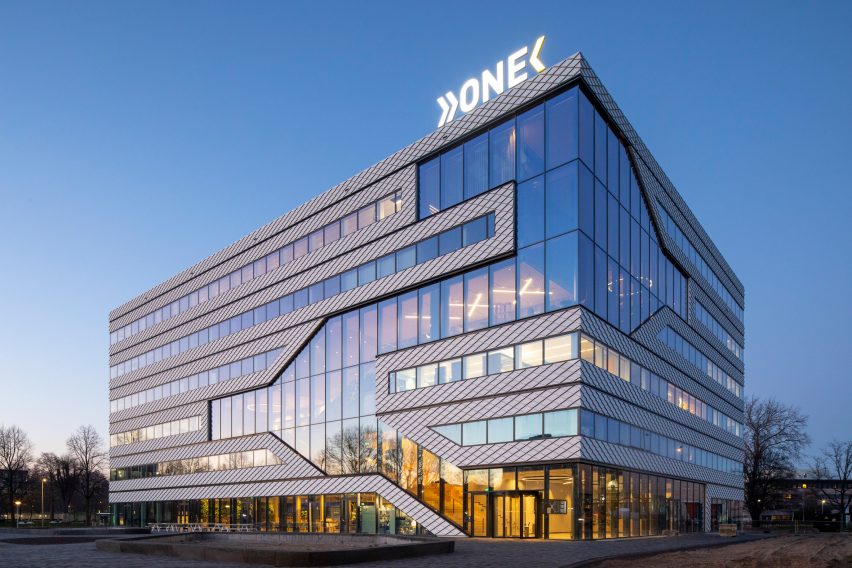
According to MVRDV, over 90 per cent of the building's materials can be reused.
"In the decades to come when the building is no longer cutting-edge, it will become a source to harvest materials from for other buildings," said MVRDV partner Frans de Witte.
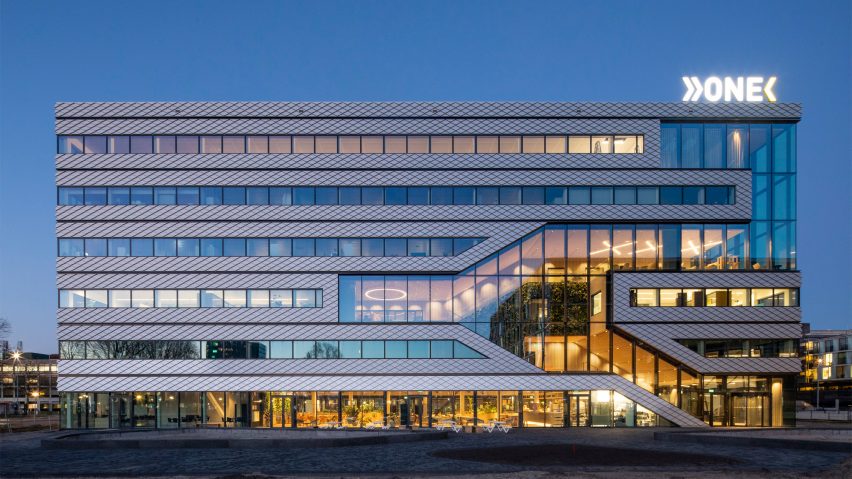
Located in the Amsterdam Science Park, a hub for researchers and entrepreneurs in science and sustainable technology, MVRDV designed Matrix One as an example of sustainable building design that meets Amsterdam's energy performance targets.
The 13,000-square-metre building is the largest of seven buildings that make up the Matrix Innovation Center and acts as a social gathering space for the campus. It has achieved a BREEAM Excellent rating, the second-highest rating for a building's environmental performance.
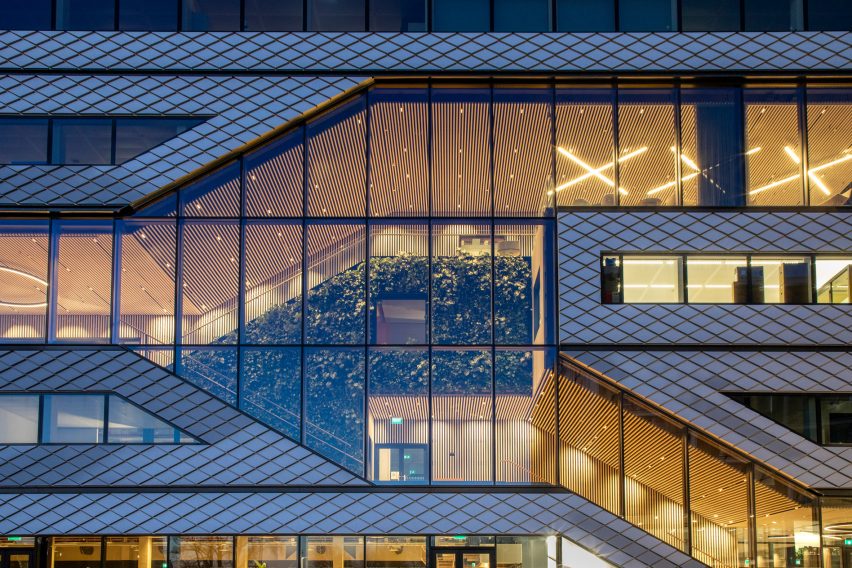
Matrix One has a glazed envelope decorated with aluminium facade modules arranged in a geometric pattern that outlines the main internal staircase.
Floors in the workspaces have a continuous finish, and internal walls were designed to be removable so they can be placed elsewhere to create different room arrangements.
Ducts were placed in the corridors and left exposed for easy maintenance without having to open up ceilings.
"We made both the interior spaces and the technical installations that serve them as flexible as possible," said de Witte.
"Offices can easily be modified to become labs and vice versa, and labs can be easily upgraded with new systems to accommodate changing standards."
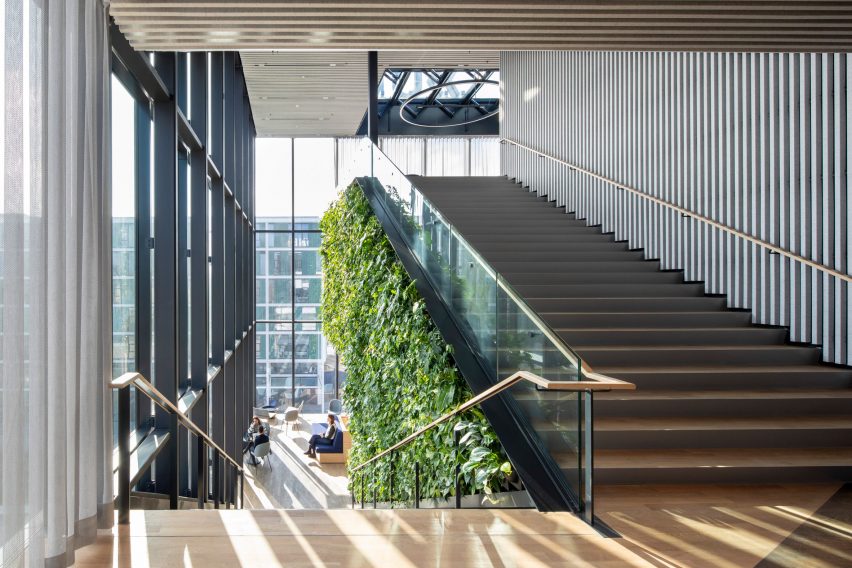
MVRDV added a "social staircase" next to the main entrance to the building, which features stepped seating, tables and coffee stations.
"These stairs bring together workers from different industries, allowing them to mingle and share ideas," said the studio.
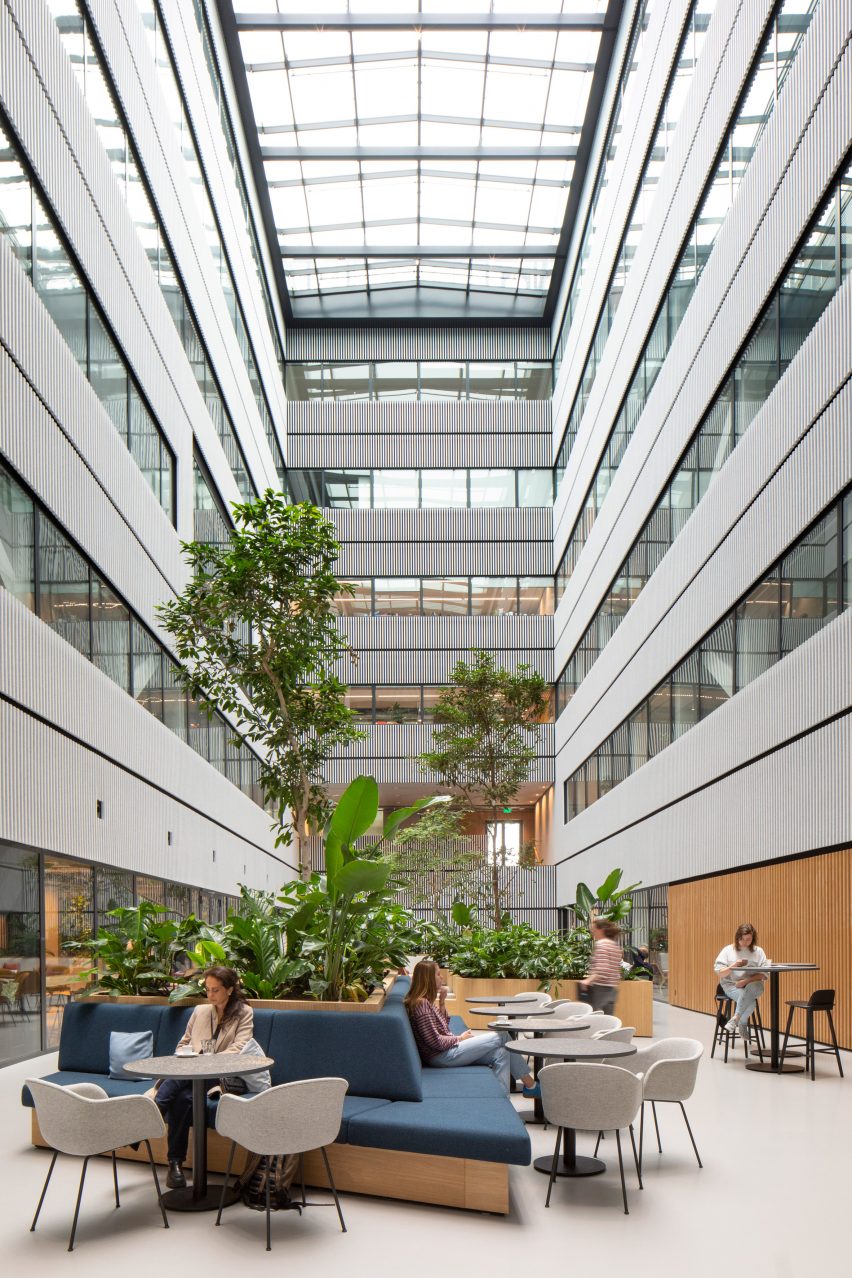
The glazed facade and atrium let natural light into the interior workspaces and automated sun shades help reduce heat load, in order to maintain a comfortable indoor temperature and reduce the amount of energy needed to cool the building.
Green walls feature along the staircase and felt wall coverings help to improve the acoustics of the social spaces.
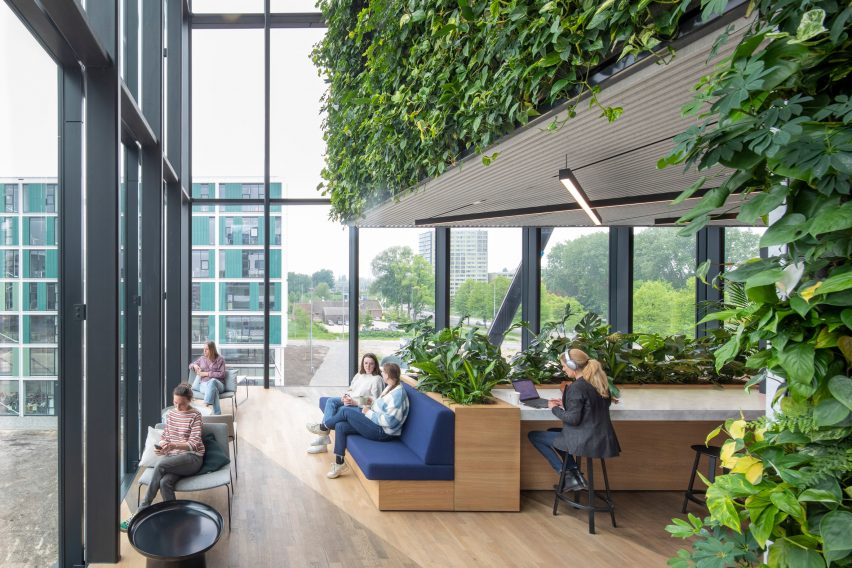
The roof is topped with 1,000 square metres of solar panels that generate a portion of the building's energy.
Lighting and heating inside the building are controlled by sensors and via a phone app, intending to help reduce energy consumption.
Matrix One also has a restaurant on the ground floor, a bar at the top of the staircase, a 100-seat auditorium and storage space for bikes.
Elsewhere in the Netherlands, MVRDV is working on the inaugural Van Gogh Homeland festival, a biennale event curated by the studio's co-founder Winy Maas. The studio is also creating a German AI hub designed to "be visible in satellite photos".
The photography is by Daria Scagliola.